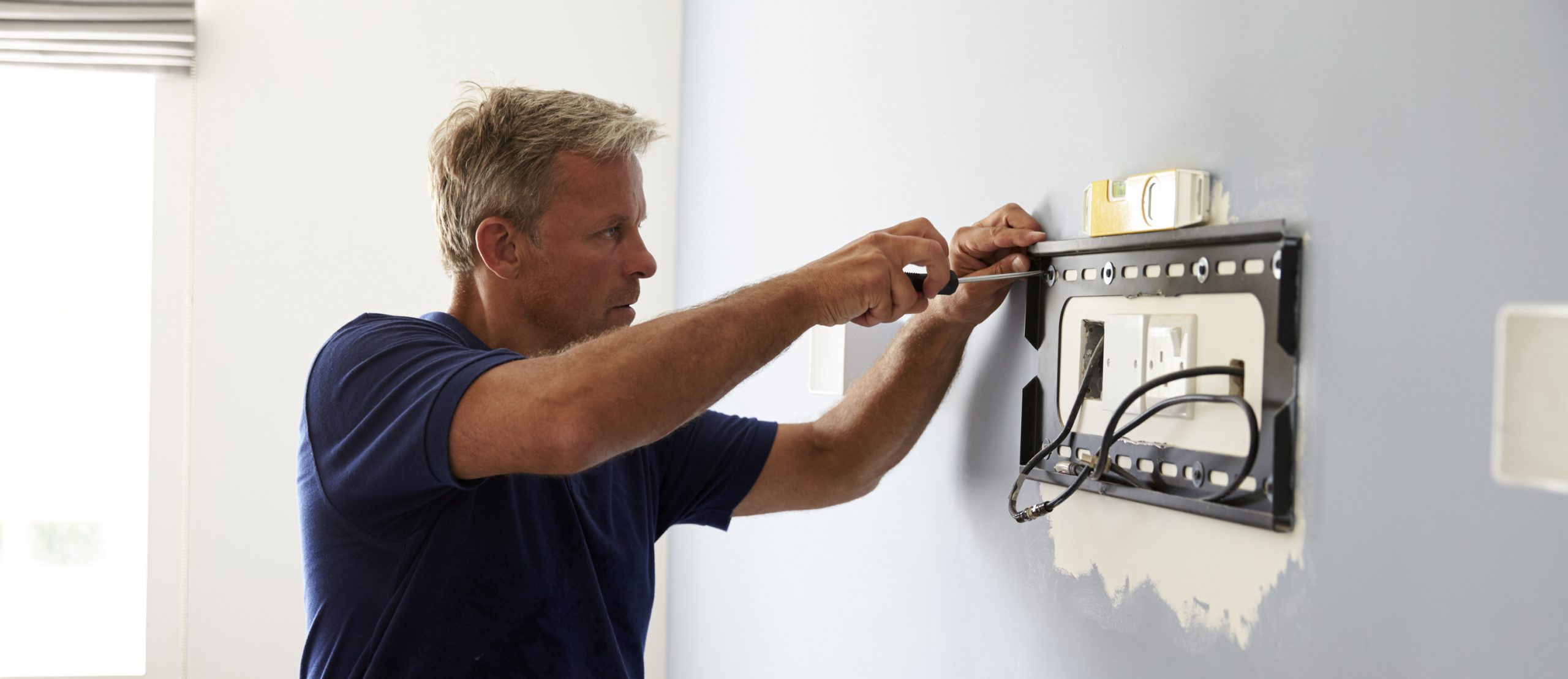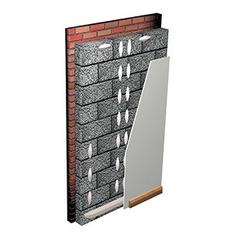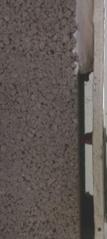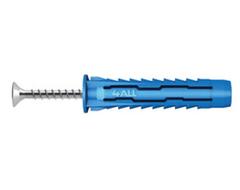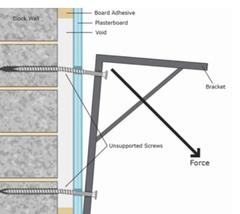Why Heavy Duty Fixings Fail on Dry Lined Walls
(Or… Why is my new TV smashed on the floor?!)
This is one of the most frequently asked questions (FAQs) that our technical support team get asked, or more accurately “…will using Corefix stop heavy items becoming loose or falling off a dry lined or dot and dab wall.” As this seems to be a fairly widespread issue, here is some information that we hope is useful to both professional installers and the DIY enthusiast.
Dry Lined (Dot and Dab) Walls
If you are working in a modern house or an extension that has been constructed in the last 20 years or so, it is highly likely that the external walls will be of what is commonly called a dry lined or dot and dab construction. This is where sheets of plasterboard have been fitted over the blocks or bricks on the internal skin to provide a smooth surface ready to accept a final paint or paper finish.
Image courtesy of British Gypsum, plasterboard manufacturers
The plasterboard is usually attached, as shown in the diagram, by dabs of adhesive or cement which is where the name of dot and dab comes from. Alternatively wooden battens may be used but this takes longer, costs more and is therefore less common.
Whichever method is used, the result is that there is a gap between the solid material of the wall and the plasterboard finish.
It is this void that lies at the heart of the problem when it comes to supporting heavy loads and it’s a problem because of the way a fixing works. This is a really simple piece of mechanics and has been around for centuries. Essentially there is a hole into which a screw or nail is inserted that also goes through the item being attached.
The modern method of using a plug in the wall which expands into the hole was developed by John Joseph Rawlings way back in 1911 and although the material used has changed over the years, the basic principle has remained the same. The plug expands as the screw is tightened, forming an excellent mechanical anchor with the solid material that is used for the wall.
The problem with the dot and dab or dry lined wall is that there is nothing for the fixing to anchor with in the void behind the plasterboard and therefore the whole of the weight is being supported by the screw and the plug extended across this gap and the plasterboard finish.
The other issue is that the plasterboard itself is not supported by any solid material behind it and it can easily deform or collapse into the cavity when trying to tighten up your fixing, (frame fixings are notorious for this) and the more weight that is applied the more likely it is for the plasterboard to fail in this way.
As is shown by the image below, when the weight is applied the screw or the fixing can bend in the void or the plasterboard can break up into the void – or both!
Any or a combination of these factors will cause the fixing to become loose or detach and fail completely.
There is the added complication of where the weight is applied. As the diagram below indicates, the further away from the wall the load is placed the greater is the force acting away from the wall. This can also have a ‘lever effect’ which can pull the anchor out of the wall as well. You can experience the difference that this levering effect has on the force applied to the fixing – hold a heavy item in your hand with your arm extended straight down by your side. Now, still with your arm straight, start to move your arm away from your body. You will immediately feel the difference and you’ll need a lot more strength the further away from your body the weight goes.
Typical examples of where these conditions occur are when attaching shelving, wall cupboards, boilers, radiators and of course wall mounted TV brackets.
How to Stop Wall Fixings Failing
There are two ways to stop this problem occurring.
The first is to make sure you screw onto something solid. If the plasterboard has been attached with battens, these can be used to attach the item to the wall using suitable screws. The problem here is that the batten might not be in the desired location.
It is also possible to add your own battens to the wall and this is a technique sometimes employed when fitting cabinets. Basically it requires the plasterboard to be cut out where the cabinet is going to be attached and a batten securely fixed to the wall. The cabinet can then be screwed to the batten. The downside of this is that it is time consuming and unsightly if the item is ever removed.
The easiest way to overcome the problem is to choose a fixing which bridges the void between the plasterboard and the masonry and transfers the load directly to the solid masonry behind. This means the fixing is not reliant on the strength of the plasterboard.
Copper pipe is sometimes used to sleeve the fixing to tie the plasterboard into the block work behind although once again this requires extra work and can be quite time consuming if a lot of fixings are needed.
At the Metex Online we focus on practical innovations that bring real benefits to the construction industry with the objective of saving both time and money as well as making everyday tasks easier to complete.
Metex researched the problem of fixing loads to dot and dab walls and came up with a simple but highly effective and practical solution. The Corefix product has a steel sleeve that fits inside the plastic plug (as shown in the diagram). This stops the plastic plug from bending or deforming in the void when a load is applied. Furthermore as the diagram shows, the weight is now supported by the masonry and not the dry lining so the plasterboard will not cave in or fracture and collapse into the void.
Corefix fixings are easy and quick to fit and require no special tools. They can also support substantial loads, having been independently tested and certified to a safe working load of 100kgs using just four fixings in fact in-house tests have securely supported 250kgs.
So, to finally answer that original question, heavy loads become loose or fall off dot and dab walls simply because an unsuitable fixing has been used.
If you have any questions at all please don’t hesitate to contact us. You can email us or call us for free on 0800 130 3646.

